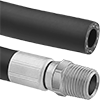Filter by
Material
Hardness
For Use With
Maximum Temperature
Core Material
Hardness Rating
Thickness
Length
Minimum Temperature
Flexibility
Export Control Classification Number (ECCN)
Clarity
Sealing
Raw Materials
Electrical
Fluid Handling
Fastening and Joining







































